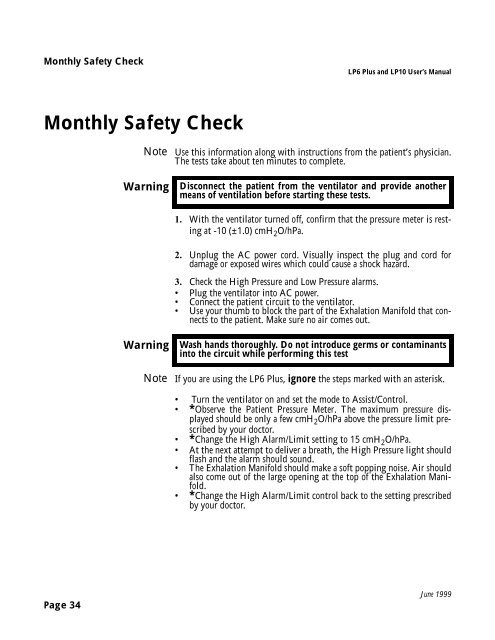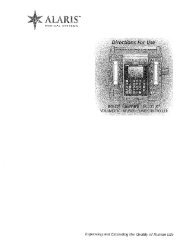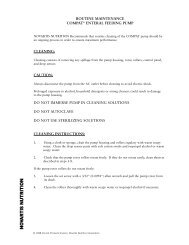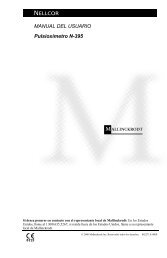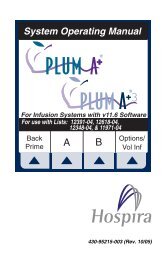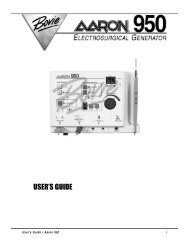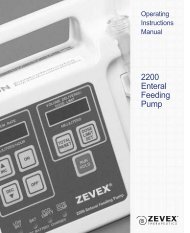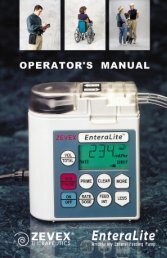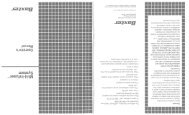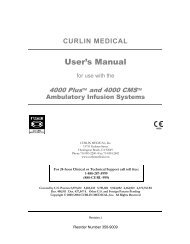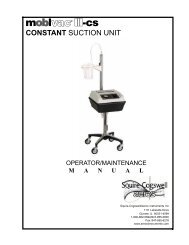LP6 Plus Volume Ventilator -And- LP10 Volume Ventilator With ...
LP6 Plus Volume Ventilator -And- LP10 Volume Ventilator With ...
LP6 Plus Volume Ventilator -And- LP10 Volume Ventilator With ...
You also want an ePaper? Increase the reach of your titles
YUMPU automatically turns print PDFs into web optimized ePapers that Google loves.
Monthly Safety Check<br />
Monthly Safety Check<br />
Page 34<br />
<strong>LP6</strong> <strong>Plus</strong> and <strong>LP10</strong> User’s Manual<br />
Note Use this information along with instructions from the patient’s physician.<br />
The tests take about ten minutes to complete.<br />
Warning Disconnect the patient from the ventilator and provide another<br />
means of ventilation before starting these tests.<br />
1. <strong>With</strong> the ventilator turned off, confirm that the pressure meter is resting<br />
at -10 (±1.0) cmH 2O/hPa.<br />
2. Unplug the AC power cord. Visually inspect the plug and cord for<br />
damage or exposed wires which could cause a shock hazard.<br />
3. Check the High Pressure and Low Pressure alarms.<br />
• Plug the ventilator into AC power.<br />
• Connect the patient circuit to the ventilator.<br />
• Use your thumb to block the part of the Exhalation Manifold that connects<br />
to the patient. Make sure no air comes out.<br />
Warning Wash hands thoroughly. Do not introduce germs or contaminants<br />
into the circuit while performing this test<br />
Note If you are using the <strong>LP6</strong> <strong>Plus</strong>, ignore the steps marked with an asterisk.<br />
• Turn the ventilator on and set the mode to Assist/Control.<br />
• *Observe the Patient Pressure Meter. The maximum pressure displayed<br />
should be only a few cmH 2O/hPa above the pressure limit prescribed<br />
by your doctor.<br />
• *Change the High Alarm/Limit setting to 15 cmH 2O/hPa.<br />
• At the next attempt to deliver a breath, the High Pressure light should<br />
flash and the alarm should sound.<br />
• The Exhalation Manifold should make a soft popping noise. Air should<br />
also come out of the large opening at the top of the Exhalation Manifold.<br />
• *Change the High Alarm/Limit control back to the setting prescribed<br />
by your doctor.<br />
June 1999


